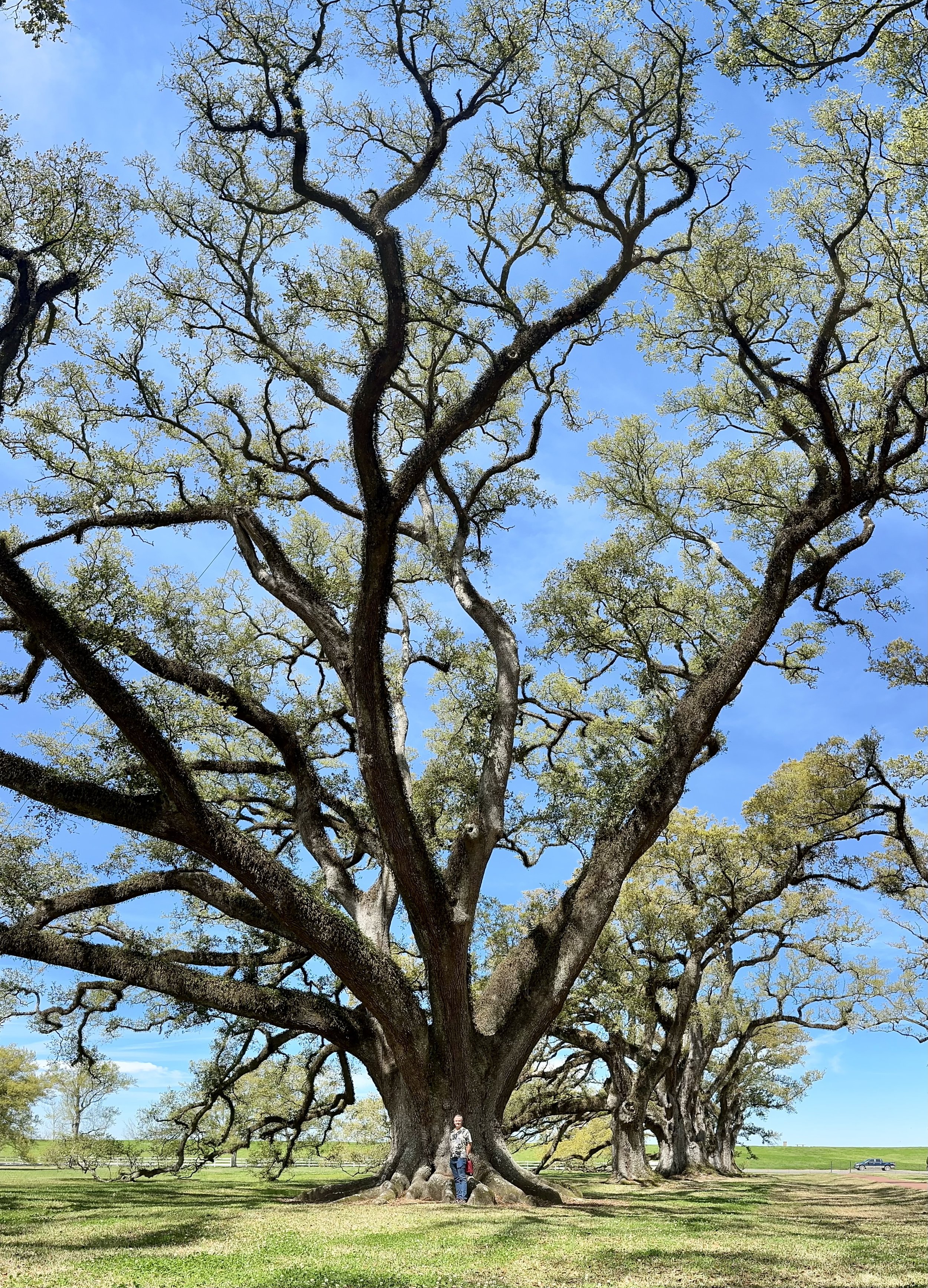Oak Alley Plantation
After two straight weeks of exploring the city, we decided to take a Sunday drive to Oak Alley Plantation, about one hour’s drive from New Orleans. It was another perfect day, sunny and cool.
Oak Alley is named and known for the 28 southern live oak trees that line the pathway to the house. The trees are estimated to be around 250 years old. We were surprised to learn that only the six trees nearest the house were originally there; the others were mature trees transplanted by hand. It was a sobering reminder that the plantation was a place of enslavement.
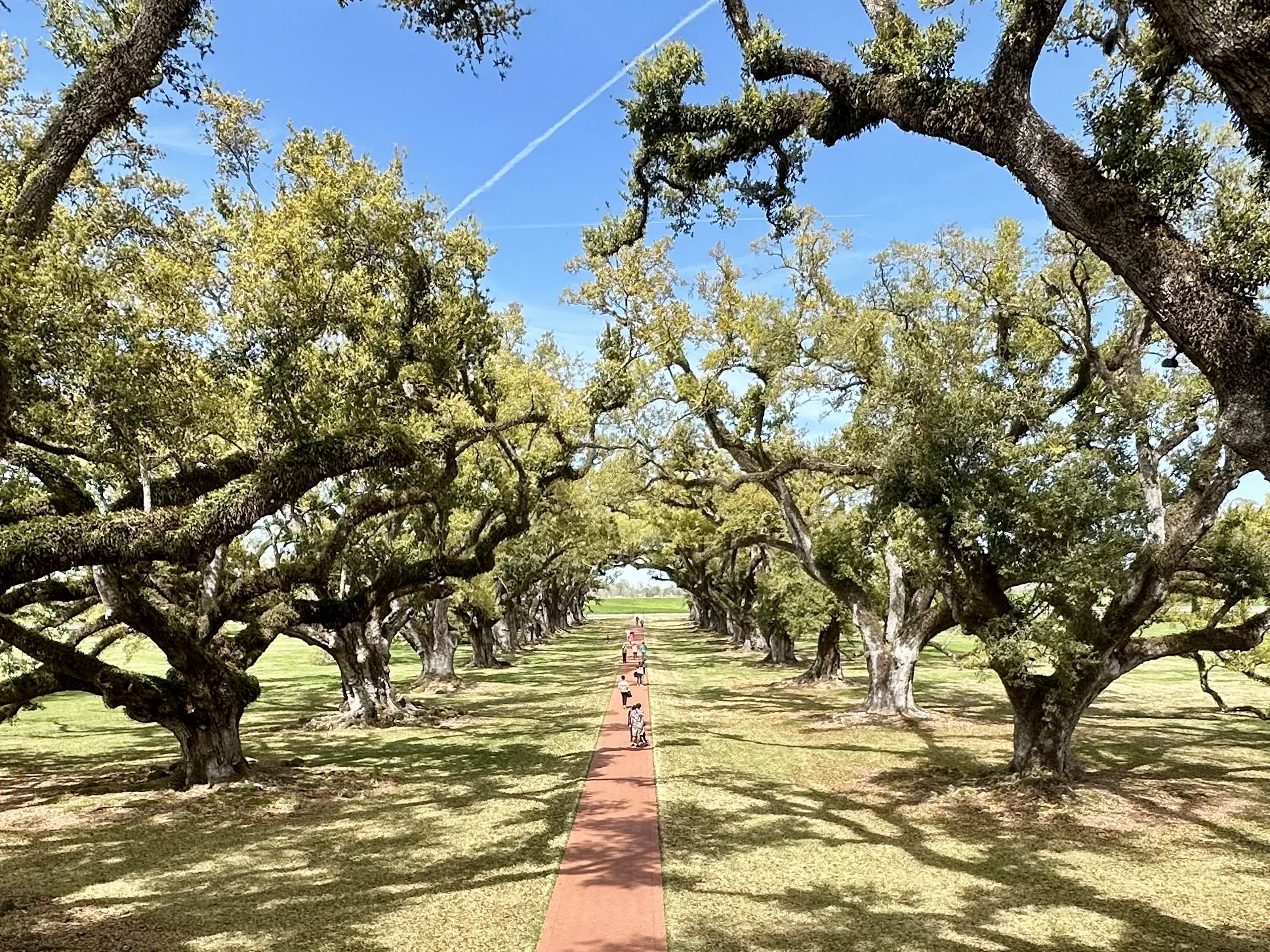
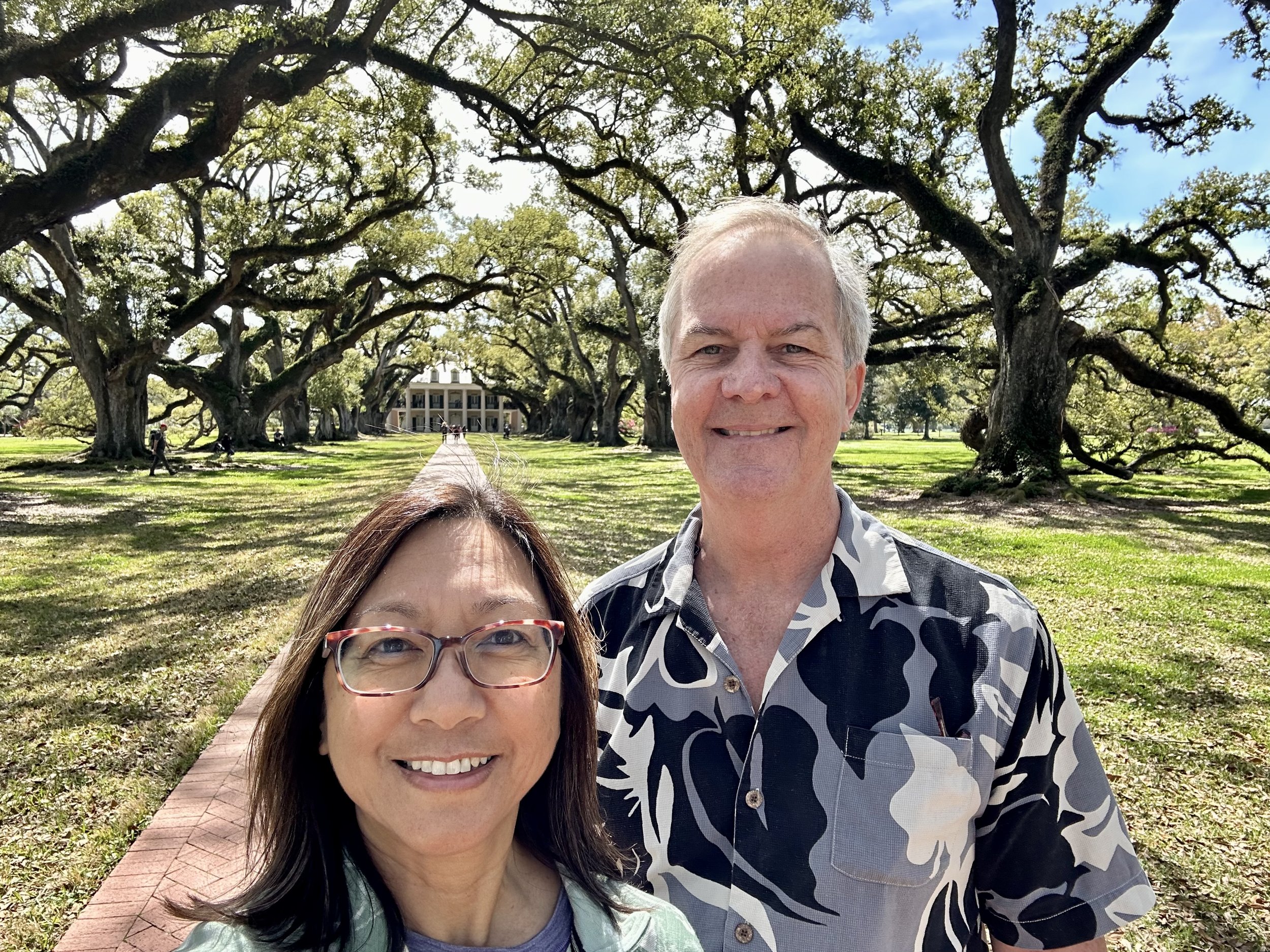
Check out the size of these trees! That tiny little figure at the base of the trunk is Steve, who is about 6ft tall. In the distance, you can see a grass-covered levee. Behind the levee is the Mississippi River.
The “Big House” with its 28 columns was completed in 1839, built by enslaved people using bricks made from local clay. Inside the house, period furnishings helped us envision daily life for the plantation owners and the enslaved people assigned to the house. The last owner to live at the Big House bequeathed it to the Oak Alley Foundation in 1972, making it possible for the public to tour the house and grounds.
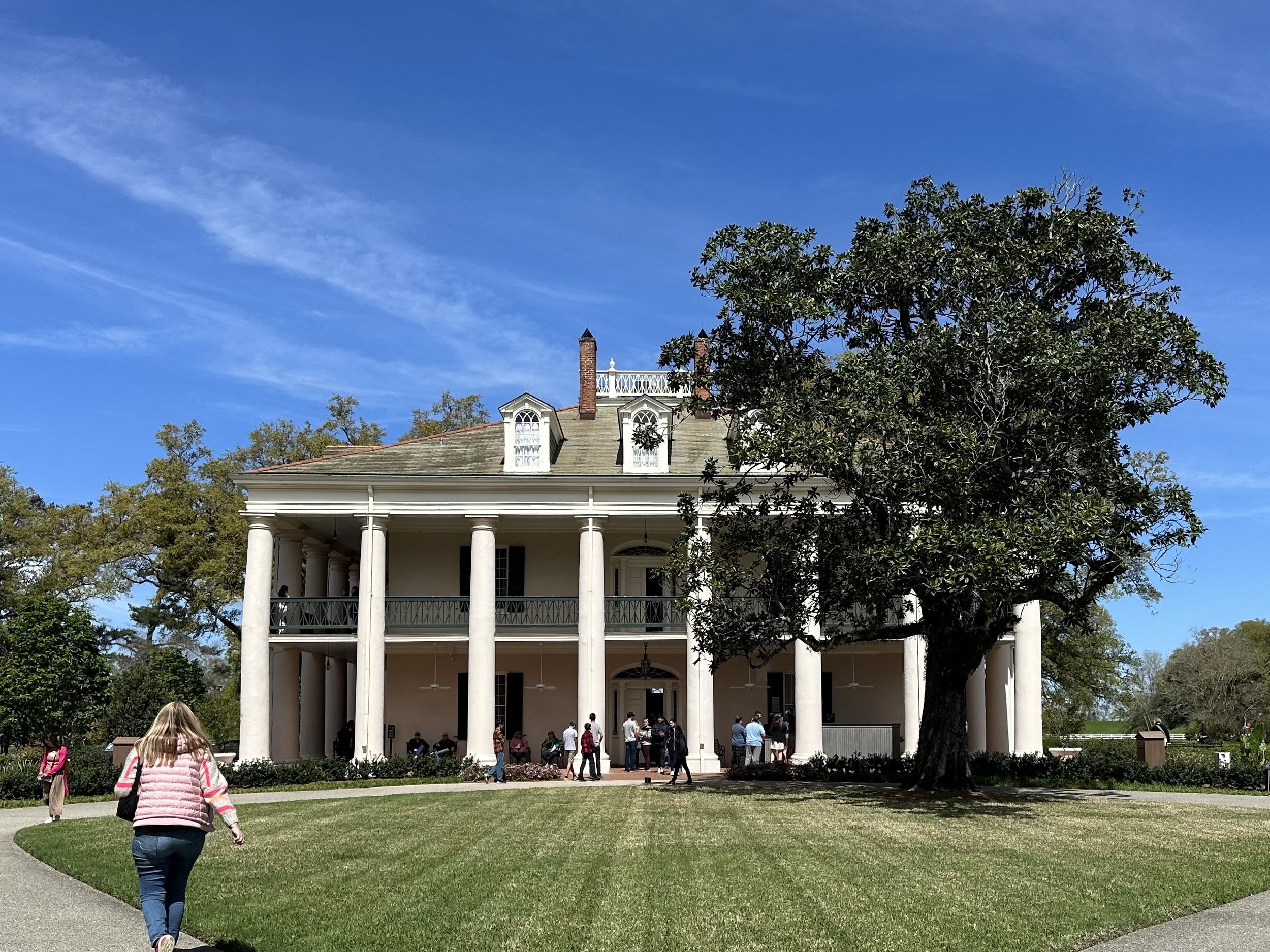
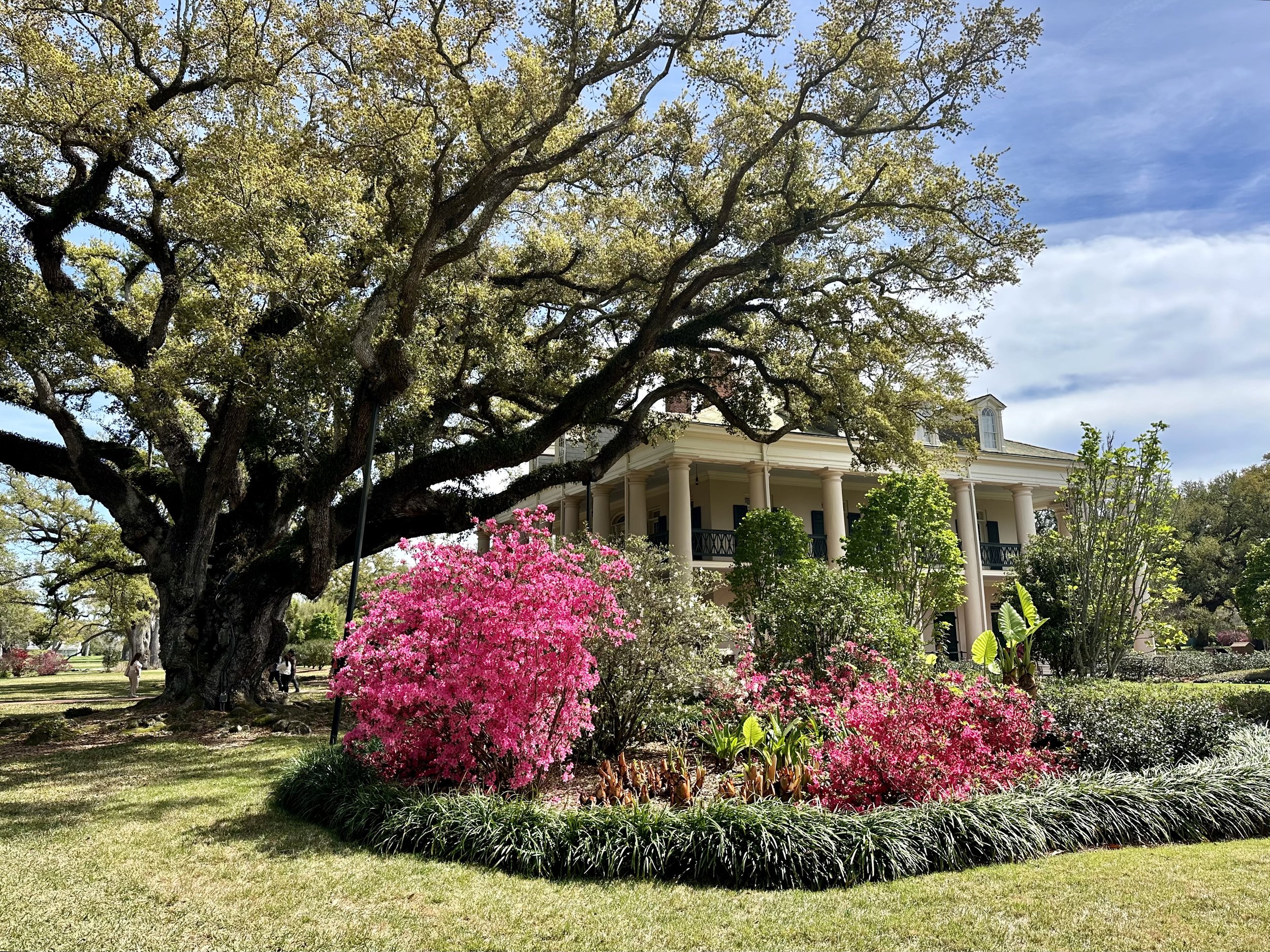
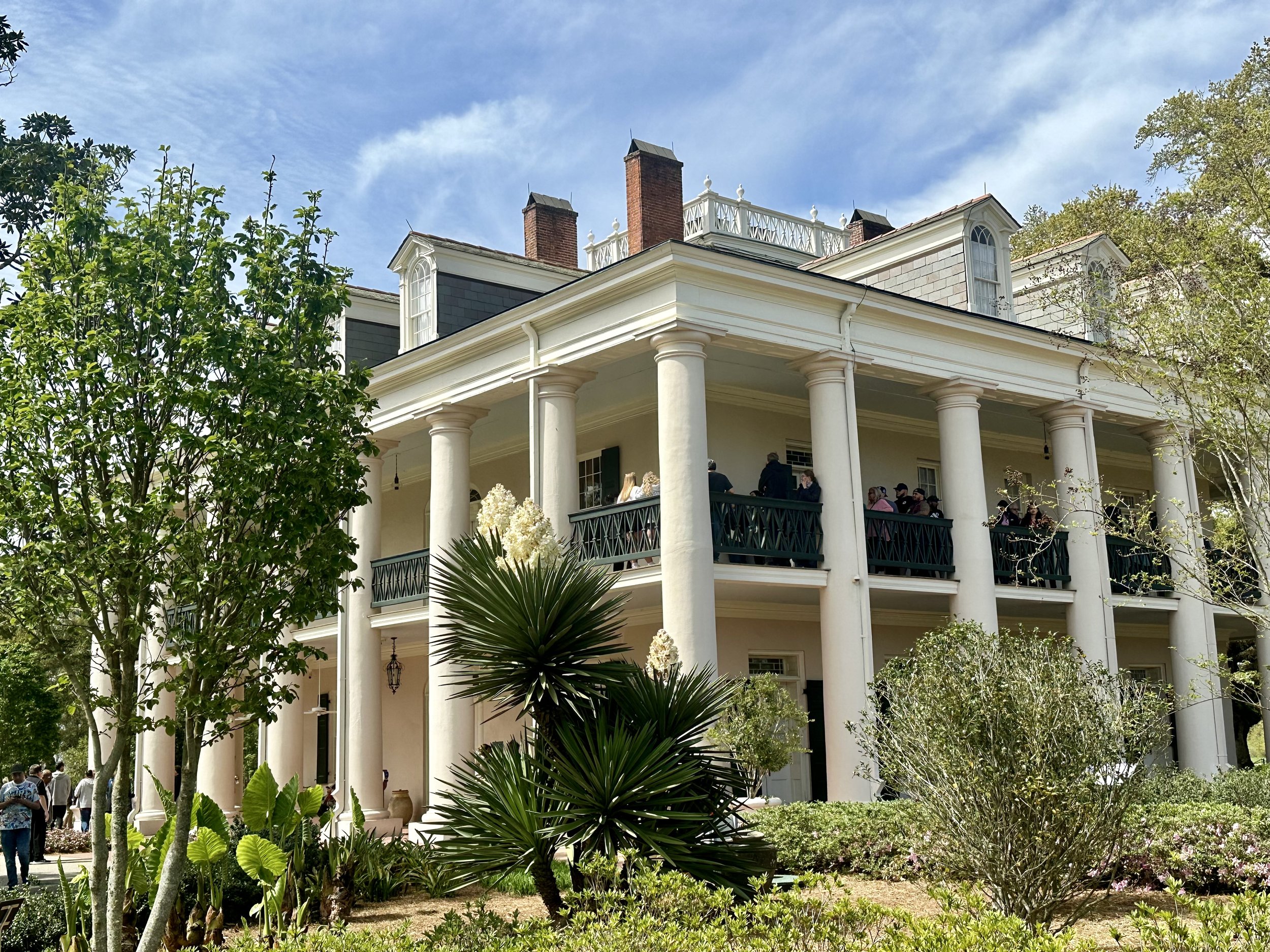
Oak Alley was a sugarcane plantation, with over 100 enslaved men, women and children. The two rows of slave dwellings contained artifacts and exhibits describing their working and living conditions. One wall listed the names of all the enslaved individuals who were at Oak Alley. We can thank Antoine, the plantation gardener, for the pecan pie we enjoy every Thanksgiving.
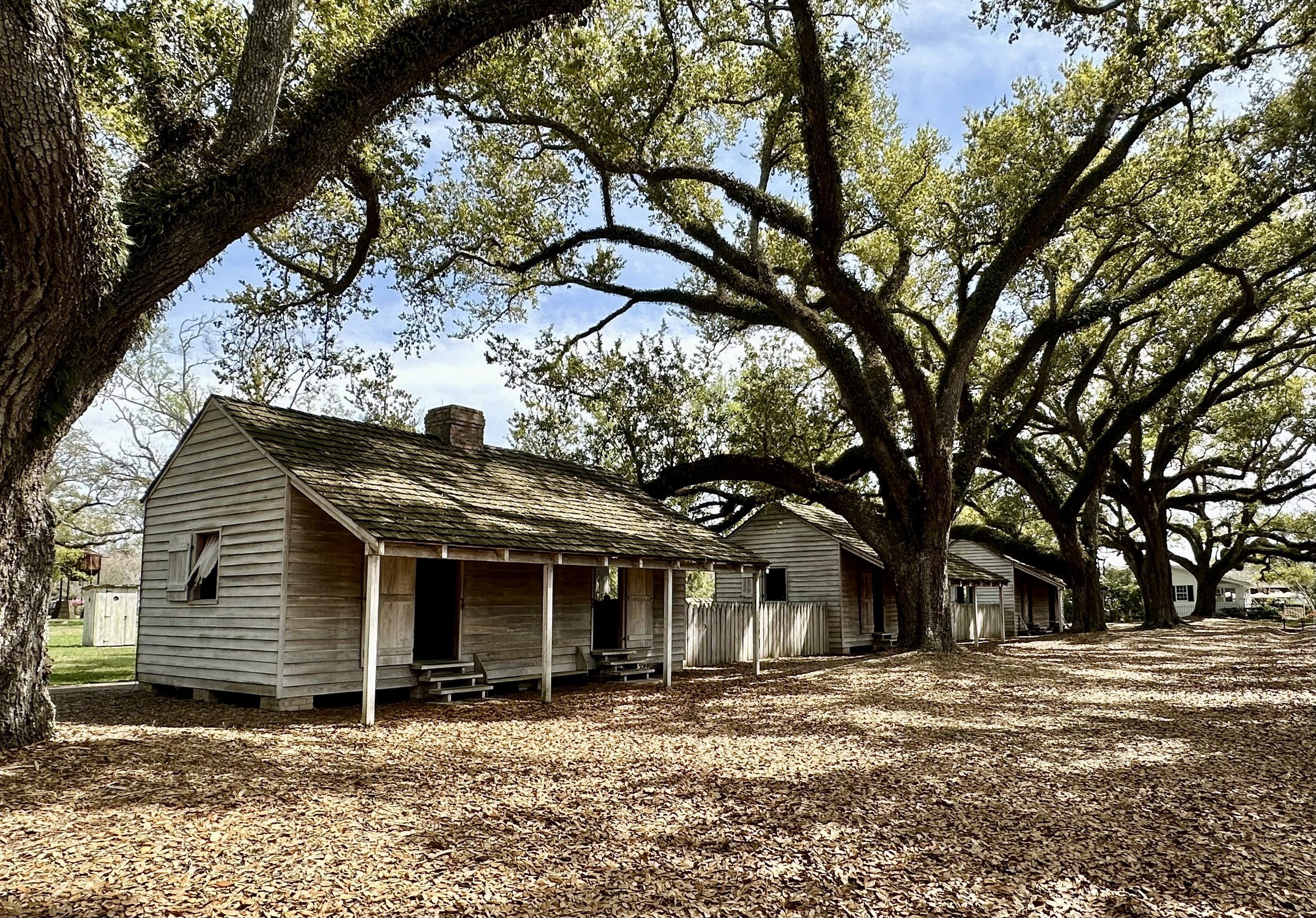
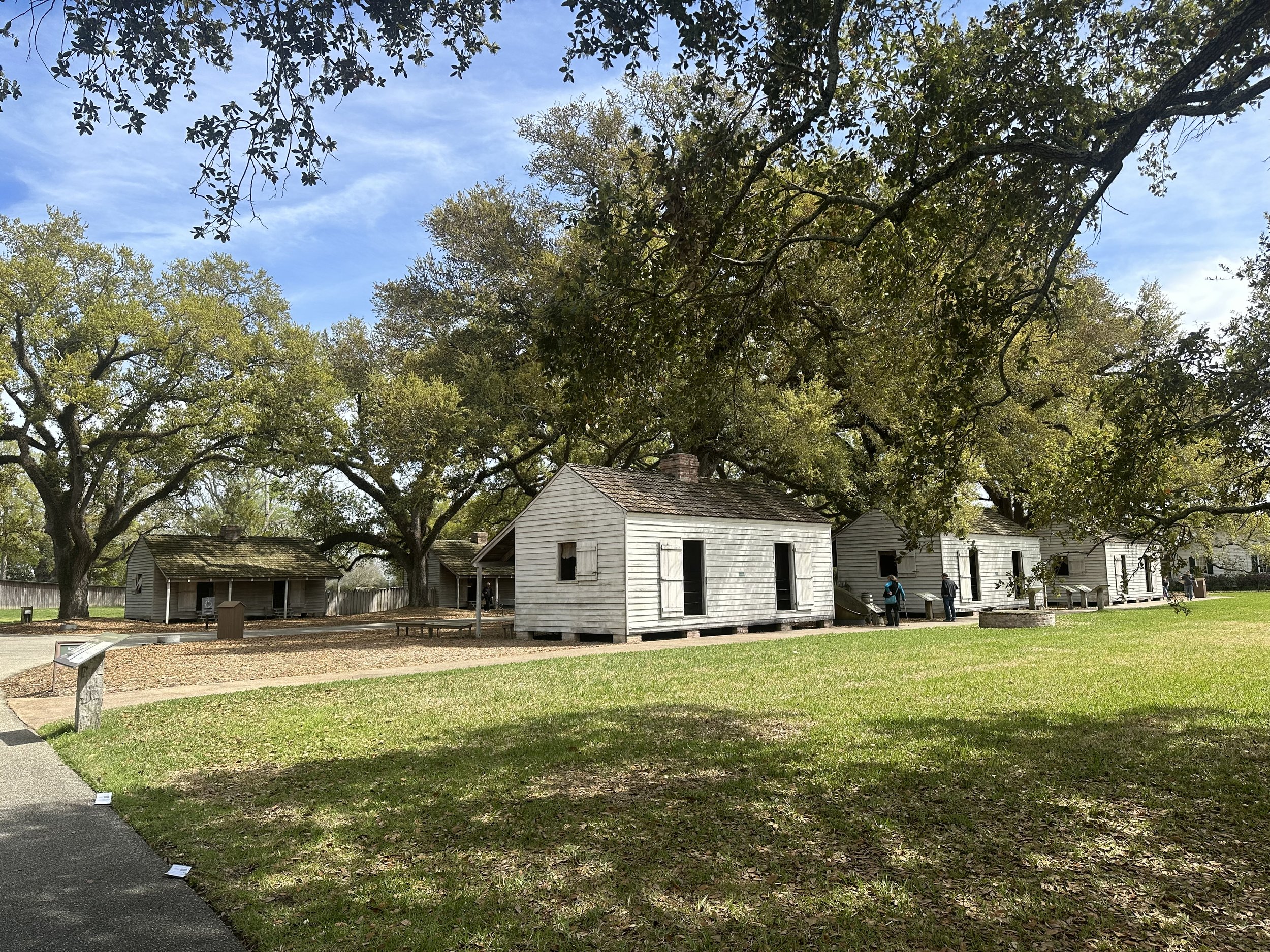
We appreciated the way Oak Alley Plantation was preserved and presented. It told an honest story about the reality of life on a plantation, with honor and respect for the enslaved people who built and tended its house, gardens, and fields.
